Pictures Mean Business: 7 ways you can support illustrators
Published on: 22 May 2017 Author: Sarah McIntyre
The immensely talented and down right wonderful illustrator Sarah McIntyre, who's work includes Vern and Lettuce and The Legend of Kevin, became our fifteenth Writer in Residence back in 2017. In this blog Sarah celebrated illustration in children's books. After all, it's a big part of what makes a great story.
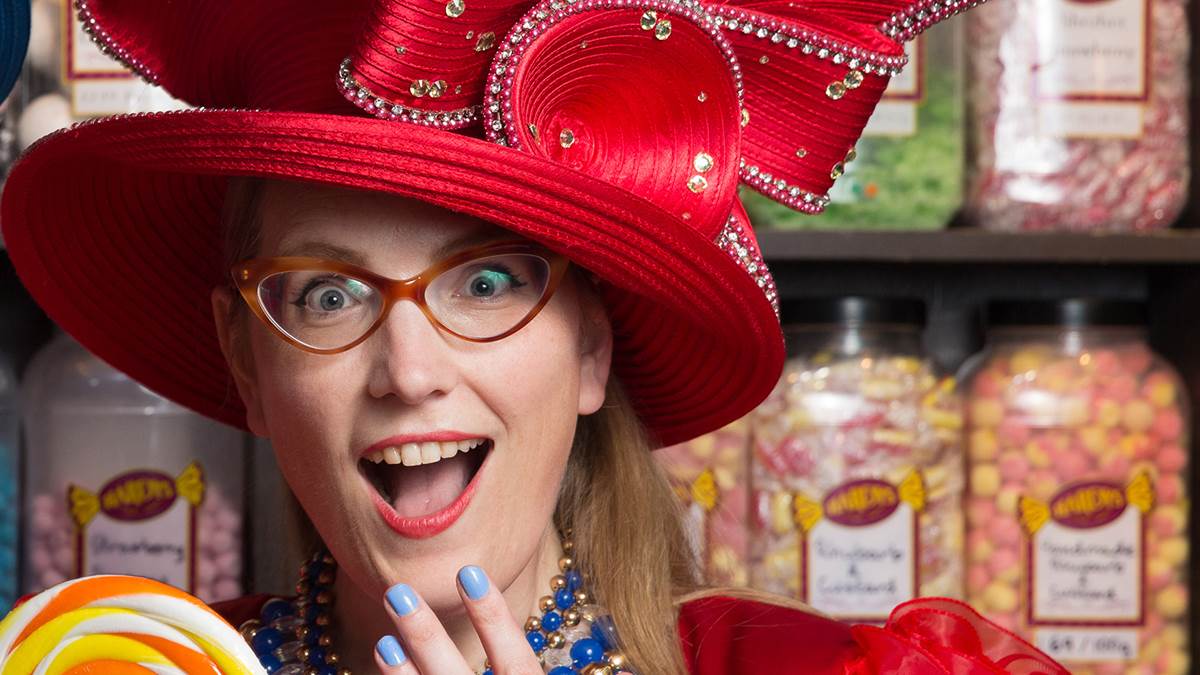
As a young illustrator, I noticed that people who love illustrated books were getting into a bad habit. They were forgetting that every time there were pictures in a book, there was a person who had made those pictures.
They'd write an ecstatic blog review, full of pictures, of a book that was mostly pictures, and forget to mention the illustrator's name. Writers would tweet the artwork for their book covers and fans would shower them with praise about it as if the writers had made it themselves. An illustrated book would go up for an award and only the writer would get a mention in the listing.
Once a teacher proudly tweeted a photo of a bulletin board she'd created with her class, featuring Superkid, my picture book with Claire Freedman. Each child had drawn their own version of the main character I'd designed, and on the board, they created a version of the front cover I'd spent at least a week painting, but with one big difference... The teacher had included only Claire's name in the display, with mine left off. ..."WHY?", I wondered.
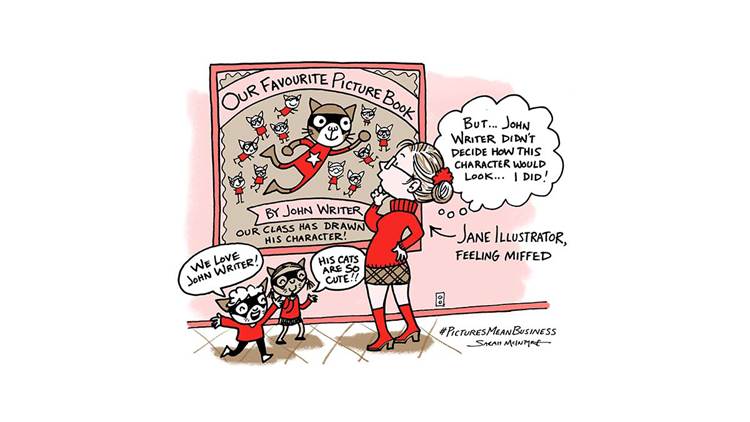
I wouldn't have thought too much longer about it if it had only been an ego issue - these things were happening all the time. But I thought, "Hey, wait - in studying this book, these kids are actually missing out on an important part of their education".
Pictures are inspiring
Teachers want writers to inspire kids, but pictures can inspire them just as much as writing, if not more. Not all kids will get excited and feel full of ideas when you put a blank sheet of paper in front of them and tell them to write something. But if they draw (or sew or sculpt) a character who looks back at them, immediately there's a connection. Australian academic Misty Adoniou wrote a great article about her research on how drawing can improve kids' writing.
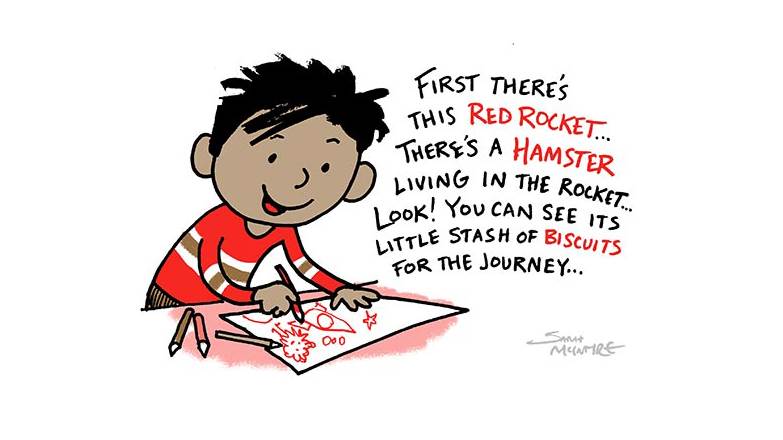
I've also seen that kids take drawing much more seriously when grown-ups are also drawing. They see it's not a childish pastime and something worth putting time into. If parents and teachers can 'big up' illustrators to them, kids can realise drawing is something that professional grown-ups do, and many kids will find this inspiring.
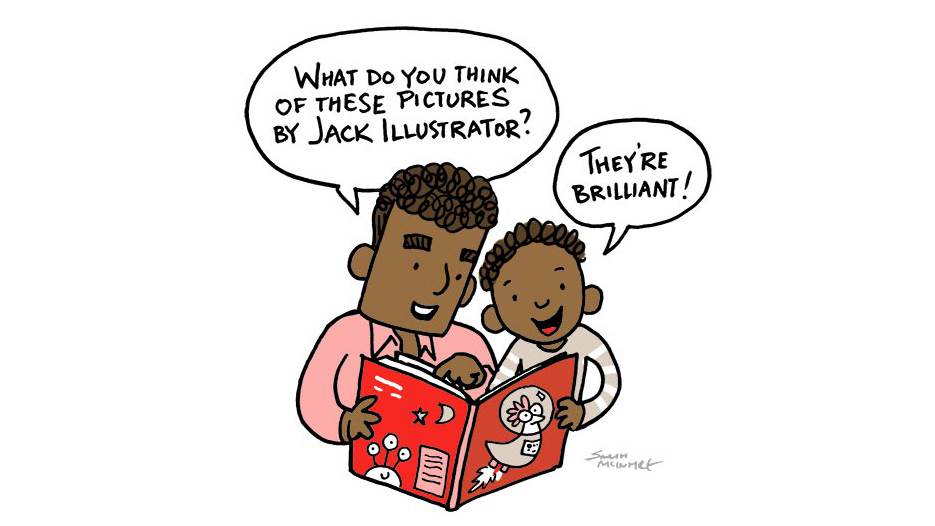
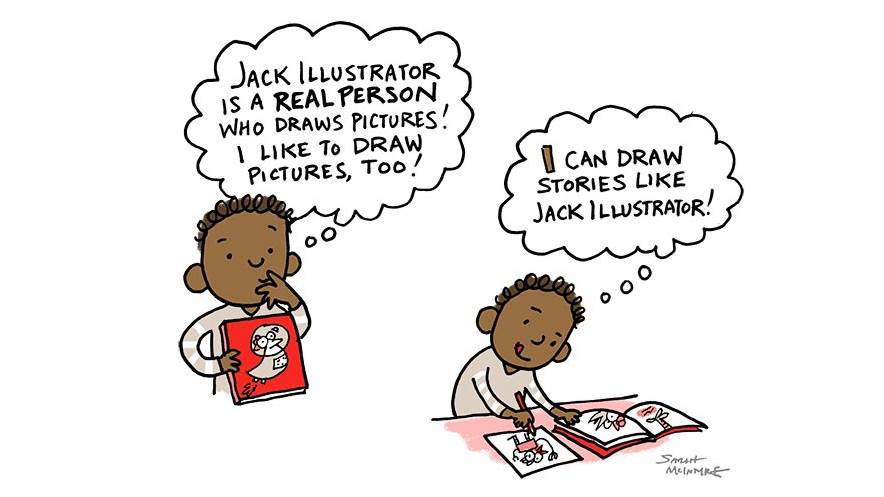
Kids who love books with pictures will read A LOT of them. They'll tear through a book in a couple of hours and be hungry for more. So how do we keep these illustrated books coming - and not just illustrated, but WELL illustrated?
We need to support our illustrators
How can you help with this? Lots of ways, but here are seven:
1. Use illustrators' names
Illustrators usually work just like writers, in that their work comes to them picture by picture or book by book, and very few of them earn a regular salary. So they need to build up their professional reputation to get more work, and that's usually based around their name. People look out for 'Julia Donaldson books', and we need to get more people looking for 'Axel Scheffler books'.
2. Talk about pictures
Particularly in picture books, the pictures can tell as much story as the text, and often more. I notice in a lot of reviews of picture books, the reviewers will credit the entire story to the writer, only to add a sentence at the end (usually the same sentence): 'The bright and colourful pictures beautifully complement the text.'
Try to think of other things you can say about the pictures, and think about how they work with the story. Look up the writer's and illustrator's websites and try to find out about how they work. Do they come up with the story ideas together (like Philip Reeve and I do)? Work separately (like I did with Claire Freedman)?
3. Stop saying 'I can't draw'
You don't say 'I can't write' because you need writing for everyday things such as posting Facebook updates, making shopping lists, emails, etc. Maybe you can't draw well because you never practice, but there's nothing to stop you from drawing badly. And that's OK! Everyone has to start somewhere. Encourage kids to explore with drawing and try new things. Model this to them by trying it yourself!
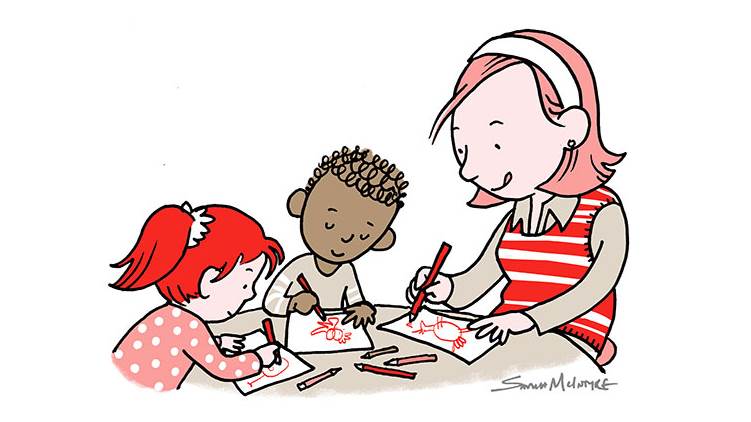
Need some drawing ideas? Here's a set of video tutorials I made with BookTrust that you can use if you want something to start you off. And check out the simple drawing challenges over at @StudioTeaBreak on Twitter! Feel free to print these out.
4. Credit any artwork you display
If you review a picture book and put up examples of the artwork, include the illustrator's name. Even better, link to their website or social media. If you tweet their drawing, include their name in the body of the tweet or tag them.
5. Ask publishers questions
One of the issues that illustrators are struggling with right now is getting their names on the front covers of books they've illustrated. If a book is highly illustrated (at least one illustration per chapter), and you don't see the illustrator's name on the front cover, ask the publisher why. Twitter seems to work best at getting publishers' attention, and if you like, you can use the #PicturesMeanBusiness hashtag to give your message some context. I think you'd be surprised how much publishers listen to readers.
One or two messages like this might mean the difference between that name going on the cover or not. (Illustrators also need to get this written into their contracts, but they're still learning. Un-agented new illustrators often feel too powerless to insist.)
6. Invite illustrators to visit your school
I've seen kids go absolutely wild watching comics creator Neill Cameron draw robots for them. After that kind of display, they'll gladly dive right into reading his Mega Robo Bros comic books, and drawing and writing their own stories. Paid school visits can be a lifeline for illustrators in supplementing their income, and the more you prepare kids for the visit, the more they'll get out of it.
I'm not taking on new visits right now because I'm all booked up for a while (here are some visits I've done in the past), but there are LOADS of illustrators out there who would be thrilled to take part. Try to find one local to your school. Ask around on social media for recommendations if you're not sure who to invite and people are almost always glad to help out. (See my 25 tips for hosting an awesome author visit.)
7. Find out more about the #PicturesMeanBusiness campaign!
You can read about it on my website, at picturesmeanbusiness.com.
Topics: Writer in Residence, Features





